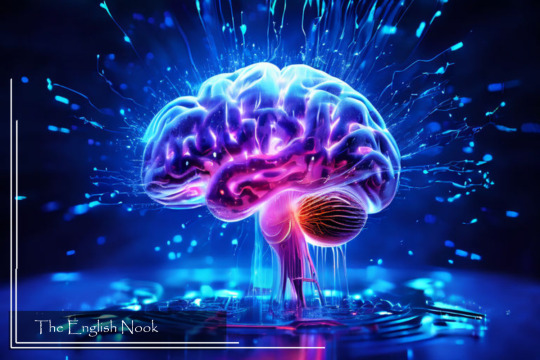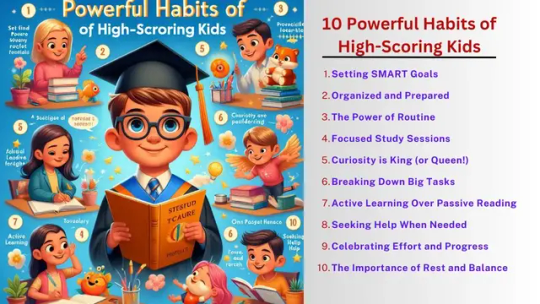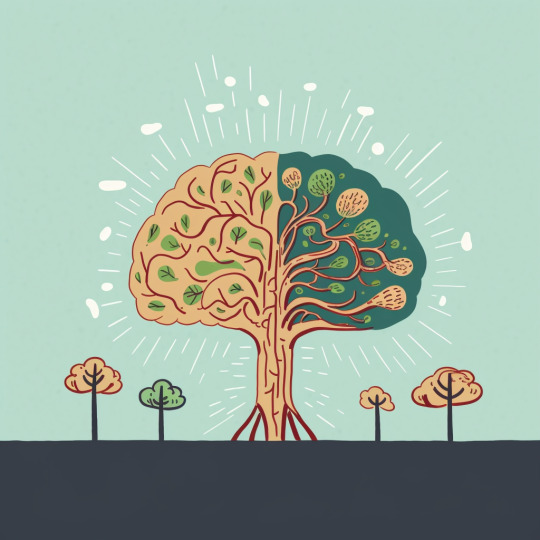#learning strategies
Text

#english in madrid#english#english language#learning languages#learning english#english as a second language#english as a foreign language#english words#motivation#inspiration#learning strategies
4 notes
·
View notes
Text
Releasing Fest Money Course
Let go of years of mental programs and accumulated feelings in just seconds in The Money Course- Free for 5 Days –
Over four decades ago, Hale Dwoskin, president, Sedona Training Associates, learned something called The Sedona Method from his friend, Lester Levenson, and his life was forever changed. He found success in every area of his life and now you can too.
The Sedona Method has already…

View On WordPress
0 notes
Text
Navigating Short-Term Memory Constraints for Optimal Acquisition
Short-Term Memory
Language learning is a complex cognitive endeavor that relies heavily on the capacity of the human mind to process, retain, and manipulate linguistic information. At the core of this process lies short-term memory, a cognitive system responsible for the temporary storage and processing of information. However, the inherent limitations of short-term memory pose significant…

View On WordPress
#Brain Changes#Cognitive Enhancement#Cognitive Processes#education#English (Advanced English Learners)#english-language#english-learning#Growth mindset#Individual Learning#inglés#language#Language acquisition#Language development#Language Proficiency#language-learning#languages#learn-english#learning#Learning strategies#Memory Constraints#Neuroplasticity#Optimal Learning#Personalized Learning#Self-Awareness#Short-Term Memory
0 notes
Text
High-Scoring Kids: 10 Habits That Unlock Academic Success
High-scoring kids possess habits that set them apart from the rest. By understanding these key habits, you can empower your child to achieve their academic goals. Let’s explore the simple strategies that cultivate success in the classroom and beyond.
10 Powerful Habits of High-Scoring Kids1. Setting SMART Goals2. Organized and Prepared3. The Power of Routine4. Focused Study Sessions5. Curiosity…

View On WordPress
0 notes
Text
Does it fit you?
There's a lot of advice for learning Japanese out there, and sometimes it just pisses me off.

Now, it's always good to look at why something irritates you in case there's a grain of truth that you're not seeing... or wanting to see. I mean, some things are unavoidable - like there being quite some work needed to learn Japanese. Especially if you want to see some results. But...
Maybe an example will help. IIRC, the YouTuber was called Mochi. I just browsed through her tips what is needed to learn Japanese, but if you want me to distill it for you, it was essentially a brute force approach, not very different from how Japanese students learn it. Using her app for Space Repetition (SRS) was basically the only nod to anything that has happened in the "learning Japanese for Westerners" space at all. I bowed out at "learn to write kanji" as a needed step.
Now, undoubtedly, writing kanji a few times can give some insight into kanji themselves, to learn concepts like stroke order. It isn't especially hard, either. And if you have problems telling certain kanji apart, this might help fix them into your brain. But in general, from my own experience, I disagree.
You see, I started out by learning to write 1,000 kanji. But now I have largely forgotten all the connections between meaning and kanji built through this exercise already. Maybe the effort to learn kanji that I've seen before through this method is lessened, but I still learn them all over with Wanikani.
I'm not claiming she said that only learning to write kanji was enough. That would be misrepresenting what she said. But if I were to paraphrase it another way, she basically said "Learn it how I did. Trust me, I'm Japanese."
Don't trust the Japanese
I've been talking about SRS a lot, and so you might think I'm a big proponent for Spaced Repetition. To that I would say... it depends.
You see, SRS by itself is only a slightly better way to do rote learning so that you are more likely to retain it in the long-term. So if somebody tries to sell you their approach by saying they use SRS (and nothing else), all they offer you is to schedule your rote learning for you. ("Anki", as I recently learned, the name of the most popular free SRS software, may simply to mean "memorize" - because that's the Japanese kanji/word for it.)
If you want to rote learn Japanese, be my guest.

I mean, it's a valid approach. It's not the fastest or most intuitive, but it's a big part of how Japanese learn the most vexing parts of, well, Japanese, aka "reading and writing Japanese."
But the general majority of Japanese dispensing advice on learning their language on the internet seem frankly uninspired. If you're looking for strategies matched to your own way of retaining information, it's quite hit and miss. (Wanikani has a Japanese founder, though.)
I have written kanji, I have trained them over two different types of SRS. But at times they don't come to mind directly, and then I'm glad if I can recall the mnemonic story I've associated with them. Because I might not recall the meaning of the kanji directly, or its readings, but maybe any of the other ways I stored them will come to mind. But that's not the effect of SRS (or SRS alone), but of an alternate learning strategy, not simply relying rote memorization.
What is your goal? What are your priorities?
But Mochi is not the only one. NihongoDekita is someone I like to watch YouTube shorts of. She wins the prize for making the lamest argument why you should learn to read Japanese (= kanji + hiragana + katakana) natively. She puts an English sentence in Japanese letters and reads out loud and says "that's not English, that's Japanese" as her argument why Romaji is not good enough for learning Japanese.
But... while Japanese is incapable to produce the sounds English requires, you can read Romaji and produce exactly the sounds Japanese requires. (You would make yourself aware of how to pronounce it properly, but the same is true for learning Hiragana as a Westerner - or any language in the world transcribed to Roman characters.) Talk about a badly made argument.

Your learning of Japanese would certainly be incomplete if you didn't learn how to read it. But then your learning of Japanese is also incomplete if you don't learn how to write it. Or if you don't learn Kansai dialect. Or if you don't learn conversational variations how contemporary Japanese change Japanese from "proper" to day-to-day speech. Etc.
But there's one question to cut through all of this: What do you want to achieve?
Do you want to learn to read manga originals? Learning to read is not optional for that. Do you want to learn basics of face-to-face conversation? Romaji is a viable way, then. Same for understanding what characters in anime say (if you are willing to ignore all the displayed kanji). None of these require being able to print kanji. And so it goes.
Learning kanji would be a bad investment of time if your primary goal or priority is to learn to converse fast. It will majorly slow you down. Ironically, it will slow you even more down if you learn less! Learning 100-200 of the most common kanji is harder because some of them are more complex ones and since you wouldn't know the radicals they are composed from from other kanji, you have less to anchor them in your brain with.
Wanikani has been criticized for not preparing you for the JLPT N5 and N4 tests, but its goal is teaching kanji in a good way for building a bottom-up understanding, not get you to the goal of the most common the fastest. You go from building blocks to bigger structures, and you build from what you know. Which helps retention in a different way. Simply using SRS would not have the same effect for retaining the kanji because they would look still alien to you. Frankly, they would, even if you learn to print them without a structured approach.
Return On Investment
The reality is, your learning time is likely limited. So might be your patience before you see results that reward you for your progress.
Yes, if you learn kanji, learning to print them can anchor them in your brain better. But if you want to learn to print them from scratch, there's an additional investment of time. In the Heisig method, you would arrange your mnemonic story so that you can actually give yourself hints what to print in what order. That's a more complex requirement for a mnemonic story than merely coming up with a story that helps you spotting the elements in any order to remember what kanji this is. Kanji elements can become quite crowded, and can appear left/right, above, under, etc. Then you need to retain some memory as to how to arrange the elements in the given space so that you can actually write the character properly.

The same time might be used to learn more kanji and vocab, or to practice grammar, tackle some graded readers... And it requires you have time to sit down and do it at a desk or table, pretty much. Commute times, in comparison, might be usable only for an app or index/flash cards, or reading.
Each learning strategy needs to evaluated for how much time it uses, how effective it is, and what kind of structure it builds for the future.
So, for example. If your goal is to take the JLPT N5 test ASAP because you need it professionally, Wanikani is not your best choice. Yes, by now I've covered practically all of them. I referenced two separate lists, and they basically say I have 99% of them. But they did not come in that order. And when I go over Bunpro's N5 vocab deck, there are lots of kanji in there that are in neither list.
I, myself, find that okay, since my goal is a complete learning of the Japanese language, not a test, but if you really have to, you might rightfully get frustrated by such "you will eventually get there" approaches. (Heisig is way worse, after all.)
There's no one true way to learn Japanese.

There are always compromises you make. And if you're taking classes, the compromises your teachers make. Reevaluate them over time and compare them to your goals. You can approximate what works best for you as you learn about the learning of Japanese itself.
Over time, unless you do courses in a fixed system, you will have to structure your Japanese learning yourself. And even then, if you apply your Japanese in some way in the real world, you need to come up with strategies to come up with the missing parts that class didn't cover yet. So being aware of your goals and priorities and comparing your current approach with them once in a while can give you a valuable sense of direction.
0 notes
Text
Stages Of Learning & Competence
This article discusses the four stages of competence, emphasizing the importance of learning and the progression of skill development.
Of putting our goals into perspective to continue to strengthen our trajectory for the year, learning is an inevitable part of the process. So, this article is curated with that in mind. What makes this article necessary is that as a learner, you may avoid learning a new skill especially if you find that you are struggling with it initially, and as a teacher, you may loose patience quite…

View On WordPress
#career growth#cognition#competence#competent#growth mindset#learner#learning#learning hack#learning strategies#memory
0 notes
Text
Learning Strategies You Need As A Student
The learning strategies you use as a student is what determines whether you pass or fail
What are learning strategies ?
They are the various activities that students can do to improve the way they learn . There are countless approaches to learning. and some are task- or subject-specific.
7 LEARNING STRATEGIES STUDENT CAN USE
1. Active Learning: Engage actively with the material by participating in discussions, asking questions, and seeking clarification. Take notes, summarize key points, and create visual aids to reinforce understanding.
2. Spaced Repetition: Instead of cramming information all at once, distribute your study sessions over time. Reviewing material at regular intervals helps reinforce long-term retention and prevents forgetting.
3. Mnemonic Devices: Use mnemonic techniques such as acronyms, visualization, or rhymes to remember complex information. These memory aids can make it easier to recall and retain important concepts.
4. Practice Retrieval: Test yourself regularly by recalling information without referring to your notes or textbooks. This practice enhances memory recall and helps identify areas that need further review.
5. Interleaving: Instead of focusing on one subject or topic at a time, mix different subjects or topics during study sessions. This approach promotes better understanding and retention by highlighting connections and patterns.
6. Teach Others: Explaining concepts to others can deepen your understanding and reinforce your knowledge. Find study groups or teach a friend or family member about what you've learned to solidify your grasp of the material.
7. Self-Reflection: Take time to reflect on your learning progress and identify areas for improvement. Assess your study methods, identify what works best for you, and make adjustments accordingly.
Remember, everyone has unique learning preferences, so it's important to experiment with different strategies and find what works best for you.
0 notes
Text
Struggling hard...little experiment time

Where do you turn when your child is struggling so hard in school that when you ask them to try as hard as they can...they begin to tear up and say "I am trying my best". What can be done when the child expresses that the teacher is going too fast for them to understand because instead of trying to help them understand more new stuff is thrown at them when they have yet to get the first thing being taught? Kindergarten...I will say that I was greatful that the school took the initiative to help...but this year forgotten left to fail. This year not one good grade has come home yet. Even trying to contact the teacher to see where she was struggling the most did not help any because instead of considering what I had to say.....the message I got back made it sound like I don't do anything with her at home and just send her to school with a "Good luck!".
When she brought home four failing grades in a row and acted confused every time, we do homework...that led to me wondering if she just wasn't understanding or if she simply isn't paying attention. Last year, I know that she had a very hard time, but it was also her first time in school, so she did summer school in order to try to help a bit. Now, this year it seems to be the same all over again. I know that only the first report card has come, but I am worried that she is going to fail again. It could be different in the school that she is in, but I am desperate to keep her out of ESE (special needs classes). I moved down here High School year and my brother was in those classes. At the beginning of the year he had believed that he could be anything and would name off a million things he wanted to be when he grew up...by the end of that school year things changed. He went from believing that he can do everything just like everyone else...to saying "I don't know, what can I be...I'm retarded" (medically diagnosed slight mental retardation). I don't want that for my bright little girl, to have her spirits crushed would be horrible.
There is several possibilities as to why she is having such a hard time and one of those is brain damage. I don't even want to think of that being the case but with her history it is possible. See, when she was only two, she was in daycare and kept getting double ear infections. That led to her being put on amoxicillin multiple times in order to try to get rid of it but it made her sick. Each time that I brought up to the doctors that I believed it was hurting her, they acted as if I was stupid because I am not a doctor. Telling me that "an antibiotic doesn't do that, she has to take it". It would give her extreme diarrhea, nausea, vomiting and fever...eventually it led to a grand mal seizure. Since a fever was present they chalked it off as a febrile seizure and having never heard of it I accepted that answer. Then another one hit when she was having breakfast with her grandma and I didn't find out until after I got off work...took her to the hospital and they said it again.
It wasn't until the night that our friends were moving away that it happened again. My husband and our friends had gone to go get drinks and some snacks for the kids and that left me sitting on the couch watching a movie with my little people. Everything was fine, my oldest was sprawled across the couch and my daughter was happily sitting beside me enjoying our movie time. When they got back, just as our friend opened the door...she suddenly fell backwards her arms and hands becoming T-rex arms, fingers locked bent, her little brown eyes rolled into the back of her head, gasping for air as if she couldn't breathe as her entire tiny body convulsed. Our friend loudly exclaimed "OH MY GOD GET IN HERE NOW IT'S ALI!" Never having seen a seizure, her father wanted to pick her up and as I cried counting, I informed him the worst thing that we could do for her in that moment was move her...we needed to wait. When she came to, she instantly clung to me crying as I rubbed her back and got dressed while holding her. Our friend rushed her and I to the hospital. When I explained to the doctor that it was now the third possibly fourth time that we had been to the hospital he immediately said that he was transferring us after making sure that she was okay to go.
They sent us to the children's hospital and took us straight to a room hooking her to machines. Nothing else could be done until later because it was almost two in the morning when we arrived. I also happened to be pregnant with my youngest at the time with barely two months left before my due date. When they ran an extended EEG test on her...it resulted in ten grand mal seizures in under twenty-four hours. The next day when she tried to eat, she couldn't even feed herself which made her sad...she began to cry harder when I began feeding her and it would just drool out of her mouth. She couldn't hold eye contact, barely able to hold her head up. My usually bright, happy little girl...became a zombie before my eyes. Her usual huge smile that could light up a room was gone and all she wanted to do was be held and sleep on me. It was days before she began to come back but then she had a new battle...adjusting to a medication given at the highest dose possible for her age and size. The medicine gave her mood swings and stole her appetite away to where I was begging and pleading for her to eat even her most favorite foods...but it stopped the seizures in their tracks and I was afraid to try anything different because it worked.
She was on that medication for three years and was just coming off it when she began kindergarten. I didn't expect straight A's or anything like that...but I didn't expect for her to fail either with how smart she is. In kindergarten though, they realized that she was struggling and without having to do anything they provided the little extra help that she needed. Before the end of the year, they even scheduled a meeting with me (very much appreciated) and when I spoke to the teacher, she actually listened to what I was saying. I mentioned what she went through and told them that she is actually stupid smart if given the chance to show it. She has issues with being still for long periods and in a classroom, you can't really get up to move around or be fidgeting with things. That is when the teacher excitedly told me that she had decided to try testing her a little differently, it being the last test of the year and having had several conversations with me she took my advice...instead of trying to make her sit there and just answer her questions, the teacher decided to have her answer a handful of questions and then do something involving moving. The teacher even got teary eyed as she told me that when she graded her test she had started crying...she passed with a 98%, resulting in the only test that she scored above a 50%.
With doing some research I discovered that there is a possibility that the seizures had an effect on the learning center of her brain. On the other end of that she could simply have ADHD, which is hard to get an accurate diagnosis for a female because a lot of times it is simply chalked up to being a girl. Of course, my first course of action was to do even further research. This led to me spending endless hours researching different things that can impact learning and different ways to teach people with various issues. I took quite a few notes in doing my search and so far most of the options don't seem to be helping much. Keeping in mind that this could just be an age thing as well, I came across an interesting concept that I spent some time looking into. The brain is something that we will probably never fully understand but I read that within a certain amount of time (I'm a tad tired but I think it was two hours) of falling asleep.....your brain can actually learn. From my understanding, it becomes a subconscious memory.
If we truly can learn in our sleep...could that help someone that is having problems in learning? It didn't really say much to that matter, but it did not say it wasn't a possibility either. Now for the experiment part that I mentioned...if every night a person (child) listens to something that they are really struggling with, will that person actually learn the information? Flash cards, having her repeat like a parrot, tracing, coloring page and sibling assistance isn't really getting us anywhere. Tomorrow, she has a BIG TEST on all of her sight words! For someone that doesn't even have the first group of words down...having to do all of them at once is almost impossible. Since we are just starting this, I am not expecting a major success right away. I know that she will likely not pass her test tomorrow, but I am hoping that she will at least get some of them correct. Since her dad works at night, a relative is in her room and I have insomnia anyways I had her come out and sleep with me. Since 11:30 pm I have been playing Learn to Read/Sight Word by Mister B...so going on four hours...I have been cycling his sight words videos on YouTube with a Bluetooth speaker near her (volume down of course because not trying to wake her, trying to help her).
We still have been doing her flash cards I made, through the school week with the weekends being relax days. Of course, I am changing that as well to 7 days a week of learning (just haven't figured out exactly how I am going to do that with me working from home, taking care of the house and of course the distractions of being home with siblings to play with). Once I'm able I even have found little workbook type things where the letters/number are indented into the page to help with handwriting. I've got to find my other papers again (they are in one place or the other lol so they are not lost) but I got a purple binder that I am going to be using for her. In the binder I am putting her medical papers from when she was diagnosed with epilepsy (thankfully now seizure free!), progress testing scores (they do a test to see if kids are at grade level in the beginning of the year and the end I think), some of her classwork & tests and since I am doing this experiment plus everything else I plan to fully track this. I am going to write down dates, length of time and specific videos played each night...I also intend to create little "tests" for her to take with me. I am also thinking that a somewhat secluded study area might be necessary but of course I'll have to make it her so that she doesn't think of this as a punishment.
0 notes
Text
Cognitive Psychology in Daily Life – Fastlane Freedom
Cognitive psychology is a branch of psychology that focuses on the study of mental processes, including how people perceive, think, remember, and solve problems. It explores the cognitive aspects of human behaviour, such as attention, memory, language, perception, decision-making, and problem-solving.
The key objective of cognitive psychology is to understand the internal mental processes that…

View On WordPress
#cognitive enhancement#the stroop effect#growth mindset#the stroop effect experiment#mindfulness#active listening#cognitive psychology#psychological well-being#problem-solving#mindfulness techniques#problem-solving skills#cognitive psychology in daily life#mental processes#human cognition#learning strategies#spaced repetition#retrieval practice#decision-making
0 notes
Text
Learning Strategies (with transcript)
click here to listen
click here for podcast
View On WordPress
0 notes
Text
The Role of Mindset in Learning and Education
When it comes to learning and education, mindset plays a crucial role in determining success. Whether we have a growth or fixed mindset can have a significant impact on our academic performance, motivation, and overall approach to learning. In this post, we’ll explore the ways in which mindset affects learning and education, and how we can cultivate a growth mindset to achieve greater…

View On WordPress
#academic performance#achievement#challenges#Continuous Improvement#Education#failure#Fixed Mindset#Growth Mindset#Learning#learning strategies#mindfulness#Mindset#Motivation#Personal Development#Positive Thinking#Self-Growth#Self-Improvement#Self-Reflection#student success
0 notes
Text
🌟✨ Join the 5-Day App Challenge and Unlock Your Potential! ✨🌟
📱🎧 Calling all Android users with great headsets! It's time to take charge of your life and embark on an incredible journey with our 5-day FREE trial challenge. Sign up today, download our app, and get ready to transform your mindset! 📱🎧

🔥🚀 Brace yourself for the coolest event you've ever seen! The In-App Challenge awaits, and it's packed with amazing benefits that will leave you amazed. 🔥🚀
🌟✨ With full access to Abundant Money Mindset, Anxiety-Free, Ideal Weight, Living the Law of Attraction, Memory Supercharger, Peak Performance, and 54 more incredible programs, you'll be on the fast track to success! 🌟✨

🎧 Put on your headphones, press play, and in just 20 minutes, watch your nonconscious mind guide you towards new results in any area of your life. It's that simple!
🧠 Created by the genius mind of Dr. Paul R. Scheele, the renowned Paraliminals are here to help you effortlessly maximize your potential, achieve your goals, and experience a balanced emotional state, positive actions, and expansive attitudes. 🧠
💥 For the first time ever, you can experience the power of all 60 breakthrough audio programs for FREE as you embark on the 5-Day MINDTRX Challenge, proudly sponsored by Learning Strategies. 💥
🎯 What's your challenge?
Whether it's overcoming procrastination, reducing anxiety, shedding excess weight, boosting energy, or reaching new heights of success, our Paraliminals are here to support you!
📝 Jot down your challenge and prepare to be amazed. When you achieve your goals with the guidance of our powerful Paraliminals, you'll not only experience incredible personal growth but also stand a chance to win fabulous prizes!
⏰ Don't miss this extraordinary opportunity to unlock your potential and achieve your dreams.
Join the 5-Day App Challenge, explore the limitless possibilities, and watch your life transform before your eyes!
👉 Register and sign up today to take part in this life-changing challenge. Your journey to success starts now! 👈
#paraliminal#paul scheele#learning strategies#self improvement#biohack#paraliminals#free paraliminal#paul scheele paraliminal#paraliminal download#paraliminals for the bar exam#paraliminals [why and how they work]#paraliminalsinhala#subliminalsinhala#mind#goal setting#mental images#personal success#sinhalaspiritual#training#reprogramyourmind#l#earning strategies#naturemusicsinhala#human mind#paul scheele 10 minute supercharger#inspiration#subconsiousmindsinhala#motivational#how to set goals
0 notes
Text
A Comprehensive Study Guide for Learning | Ekya Schools
Boost Your Learning Potential with Effective Strategies and Expert Tips! Discover valuable insights and practical techniques to enhance your learning experience. From proven study methods to time management tips, our comprehensive guide equips you with the tools you need to succeed. Whether you're a student striving for academic excellence or a lifelong learner looking to expand your knowledge, this blog post provides valuable advice tailored to your needs. Maximize your learning efficiency, retain information more effectively, and achieve your educational goals. Don't miss out on this opportunity to unlock your full learning potential - start your journey today!
1 note
·
View note
Text
The Neuroplasticity of Language Acquisition
Neuroplasticity is a foundational concept in neuroscience that highlights the brain’s remarkable adaptability. It refers to the brain’s ability to reorganize its neural pathways by forming new connections and altering existing ones throughout an individual’s life. This process allows the brain to adapt to changes in the environment, learn new skills, recover from injuries, and compensate for…

View On WordPress
#Adult language acquisition#Brain reorganization#Child language development#Cognitive Development#Cognitive flexibility#education#English#english-language#english-learning#Growth mindset#inglés#language#Language acquisition#Language fluency#Language Learning#Language Proficiency#language-learning#languages#learn-english#learning#Learning strategies#Lifelong Learning#Neural connections#Neural Pathways#Neuroplasticity
1 note
·
View note
Text
Excellent Collaborative Learning Strategies for Modern Days

As thousands of students and learners move to online learning, educators find it challenging to adapt in-person classes for remote learning. Many instructors can do a much better job keeping students hooked while teaching online. Currently, they are stuffing courses with passive education activities, making online learning boring for students. However, the need of the hour is that educators employ different collaborative learning strategies to keep students engaged.
The slapdash Zoom lectures can keep students engaged for only a short time, making it easier for learners to get distracted, disengage and tune out.
Educators must get students to tune back by adopting diverse collaborative learning activities. This, in turn, will encourage learners to get involved with the learning process, material, and each other. Also, studies prove that online collaborative activities enhance academic performance, knowledge retention, and interpersonal skills.
Collaborative Learning Strategies for Student Engagement
We have compiled a list of our favorite collaborative learning strategies that can quickly improve the online learning process and keep students engaged throughout the course.
Jigsaw Technique
The jigsaw technique is one of the most effective methods to help students process and retain information. It builds on the method called “teaching others.” To use this from all the collaborative learning strategies, ask students to learn only a piece of material (jigsaw) and then teach it to fellow learners in a group. Therefore, the group will work together to synthesize the information and then prepare a presentation about what they learned.
Think-Pair-Share
It’s a classroom collaborative learning technique, but educators can enact it online hassle-free. In the think-pair-share approach, students are made to work together in pairs to assess, evaluate, analyze or synthesize a lesson. Then they have to share their findings with their fellow students.
You have to pair off students to reproduce the think-pair-share technique. First, the educator presents a question at the end of the class; students then meet and discuss their answers before the next session.
Brainwriting
Only the loudest and most confident students get to participate and share ideas during class discussions. Whereas classroom brainstorming sessions help even the quieter students put forth their thoughts, questions, and concepts. Henceforth, brainwriting is an excellent collaborative learning strategy to encourage students to generate ideas beforehand while ensuring every student gets a chance for thoughtful discussion.
Daily Discussion Questions
Online discussion boards are among the simplest collaborative learning activities to facilitate student engagement and enhance learning. Post daily or weekly questions on discussion boards to spark conversation and motivate students to think critically and creatively.
Break-Out Group Discussions
It becomes difficult for some to speak up in large groups in classes with hundreds of students. So instead, segment your class into small breakout groups so that everyone gets a chance to speak.
Smaller breakout groups consisting of 20 people or less are very effective. Each discussion group should have a moderator to facilitate the discussion and manage conflicts and issues that may arise. A teaching assistant or a student volunteer can perform these duties.
Peer Review
Having pupils review each other’s work is an excellent way to ensure that students get the most out of individual feedback and attention, even when working in large groups. Teachers and students can use tools in online learning to get the most out of it.
The peer-review process benefits both the reviewer and the reviewee. Providing and receiving extensive feedback from fellow students help pupils deepen their understanding of the subject and improve their writing skills.
Scaffolding
Scaffolding isn’t just unique to collaborative learning strategies, although it can be a valuable tool for structuring collaborative learning.
A house can’t be built without scaffolding; likewise, you cannot expect learners to do complex coursework without supporting study materials to direct them. Again, SimpliTaught comes in handy, providing supplementary lecture videos to help students learn seamlessly. Therefore, instructional scaffolding is a collaborative learning strategy that helps build more significant concepts on top of simpler ones.
Final Thoughts
The shift to online learning hasn’t been easy, but the above-mentioned collaborative learning strategies can help students feel involved and engaged even through their computer screens.
0 notes